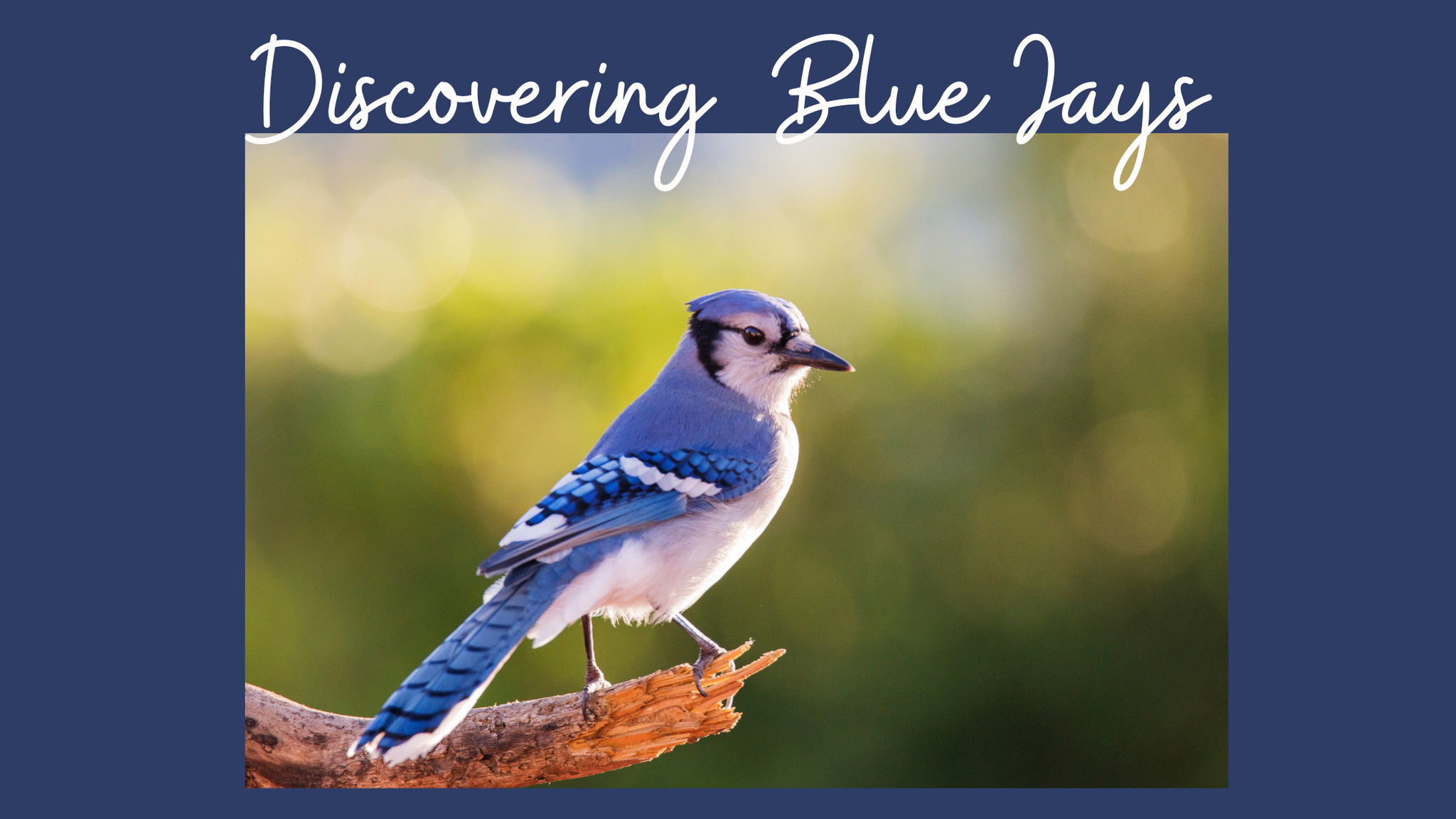Discovering the Blue Jays
- Posted on
- By Bobbi Wright
- Posted in Backyard Birding, Bird Habitat, Bird Lovers, Bird Watching, Birding Tips, Blue Jay, Native Plants, Nature Lovers, Spiritual Meaning, Wildlife
- 0

Discover the fascinating world of Blue Jays in our latest blog post. Learn about their habitat, diet, and nesting habits, and uncover interesting facts about these intelligent birds. Find out how to attract Blue Jays to your garden with the right food and native plants. Plus, explore the spiritual significance of seeing a Blue Jay and what it might mean for you. Perfect for bird enthusiasts and nature lovers alike!
Discovering the Blue Jay: A Vibrant Visitor in Your Backyard
Not just a baseball team mascot for Toronto, The Blue Jay, with its stunning blue feathers and lively personality, is a favourite among bird enthusiasts. This month, we celebrate the Blue Jay as our Bird of the Month, delving into its habitat, diet, nesting habits, and the deeper meanings it holds for many.
Habitat and Behavior
Blue Jays are commonly found in forests, parks, and suburban areas across North America. They thrive in deciduous and mixed forests, often seen flitting about in family groups. Known for their intelligence and curious nature, Blue Jays are skilled at mimicking the calls of other birds, particularly hawks, to ward off potential threats.
Diet and Feeding Habits
These omnivorous birds have a varied diet, enjoying seeds, nuts, fruits, and insects. A particular favourite is acorns, which they often bury for later consumption, playing a crucial role in forest regeneration. To attract Blue Jays to your backyard, offer peanuts, sunflower seeds, and suet. Our Right Stuff seed blend has plenty of enticing seed and peanuts to make them happy. Platform feeders and most all purpose style feeders will entice them to visit regularly. Peanuts in shell along a railing will invite blue jays in and you'll enjoy their aerodynamics as they fly in and take off with whole peanuts in their beaks. Did you know they can store up to 14 peanuts in their crops at a time? And their crop isn't really a crop in the true sense - they have an expandable esophagus that helps with this little storage trick. Find peanut feeders here.
Nesting Habits
Blue Jays build their nests in the branches of trees, using twigs, grass, and mud to create a sturdy structure. Both males and females participate in nest-building, showcasing their cooperative nature. They are protective parents, often seen fiercely guarding their nests from predators. These birds do not use human built bird houses.
Interesting Facts
- Blue Jays are known for their complex social behavior and communication skills.
- They can mimic the calls of hawks, a tactic used to deceive other birds. They have several calls you may recognize, one of them being the "squeaky gate" or "clothesline" call.
- Despite their bright blue appearance, Blue Jays' feathers are actually brown; the blue color is a result of light refraction.
Attracting Blue Jays to Your Garden
To invite Blue Jays into your garden, consider planting native trees and shrubs that provide food and shelter. Oaks and beeches are particularly attractive, offering both acorns for food and nesting sites. Providing a birdbath will also encourage them to visit, as they enjoy bathing and drinking regularly.
Spiritual Significance
In many cultures, seeing a Blue Jay is considered a symbol of clarity, communication, and intelligence. They are often seen as messengers, reminding us to speak our truth and embrace curiosity. For some, the presence of a Blue Jay signifies protection and the need to stand strong in one's beliefs.
The Blue Jay is more than just a beautiful bird; it is a symbol of intelligence, adaptability, and strength. By understanding their habits and needs, you can create a welcoming environment for these vibrant visitors in your backyard. Visit The Birdhouse Nature Store for all your Blue Jay-friendly products and enjoy the lively presence of these remarkable birds.

Comments
Be the first to comment...